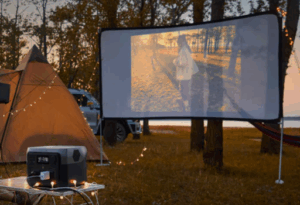B2B Websites: The Role of Visual Design in Building Trust

Trust is the cornerstone of successful partnerships in the dynamic world of B2B (business-to-business) interactions. As more businesses turn to online platforms for their procurement needs, the visual design of B2B websites, also known as B2B website design, plays a pivotal role in establishing and nurturing trust between buyers and sellers. And this article explores the significance of visual design in building trust on B2B websites and how a well-crafted user experience can foster authentic connections and foster long-lasting business relationships.
First Impressions Matter: The Impact of Visual Appeal
Just like in face-to-face encounters, first impressions also matter in the virtual realm. When a potential buyer lands on a B2B website, the site’s visual appeal is the first thing that captures their attention. A clean, modern, and professional design exudes credibility and signals that the business takes its online presence seriously. Conversely, a cluttered or outdated design may deter potential customers, casting doubt on the legitimacy of the company.
Communicating Professionalism and Reliability
A well-designed B2B website communicates professionalism and reliability to visitors. A polished visual layout, high-quality images, and consistent branding instil confidence in buyers that they are dealing with a reputable and established business. On the other hand, a poorly designed website can give the impression of disorganisation or lack of attention to detail, leading potential customers to question the reliability of the company’s products or services.
User-Friendly Navigation: Enhancing Trust Through Ease of Use
Visual design encompasses not only aesthetics but also the user experience. A user-friendly B2B website with intuitive navigation makes it easy for buyers to find the information they need. Clear calls-to-action and straightforward pathways to contact or make a purchase build trust by showing that the company values its customers’ time and convenience. A smooth user experience leaves a positive impression, enhancing the likelihood of repeat business and referrals.
Showcasing Quality and Expertise Through Visual Content
Visual content, such as high-resolution images, videos, and infographics, is a powerful tool for showcasing product or service quality and demonstrating industry expertise. By visually presenting their offerings and expertise, B2B websites can build trust by providing tangible evidence of their capabilities. Customers are more likely to trust a company that transparently showcases its products or services with engaging visuals.
Consistency in Branding: Building Recognition and Trust
Consistency in branding is not just a design choice; it is a powerful strategy that contributes significantly to building recognition and trust in the eyes of customers. A cohesive and consistent brand image across the B2B website, social media platforms, marketing materials, and even offline collateral reinforces the company’s identity and message. When customers encounter familiar visual elements, such as logos, colour schemes, and typography, across different touchpoints, it creates a sense of familiarity and reliability.
Conclusion: The Art of Building Trust Through Visual Design
In the B2B landscape, where trust is the currency of successful transactions, B2B website design plays a crucial role in establishing credibility and fostering connections with potential buyers. A visually appealing and user-friendly website communicates professionalism, reliability, and expertise, leaving a lasting impression on visitors. By showcasing the company’s offerings with compelling visual content and maintaining consistency in branding, B2B websites can build recognition and trust, paving the way for fruitful business relationships. In the competitive digital age, investing in B2B website design is not just about aesthetics; it is a strategic move to create authentic connections and thrive in the B2B marketplace.








